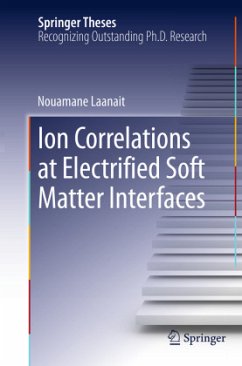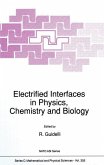Ion Correlations at Electrified Soft Matter Interfaces presents an investigation that combines experiments, theory, and computer simulations to demonstrate that the interdependency between ion correlations and other ion interactions in solution can explain the distribution of ions near an electrified liquid/liquid interface. The properties of this interface are exploited to vary the coupling strength of ion-ion correlations from weak to strong while monitoring their influence on ion distributions at the nanometer scale with X-ray reflectivity and on the macroscopic scale with interfacial tension measurements.
This thesis demonstrates that a parameter-free density functional theory that includes ion-ion correlations and ion-solvent interactions is in agreement with the data over the entire range of experimentally tunable correlation coupling strengths. The reported findings represent a significant advance towards understanding the nature and role of ion correlations in charged soft-matter.
Ion distributions underlie many scientific phenomena and technological applications, including electrostatic interactions between charged biomolecules and the efficiency of energy storage devices. These distributions are determined by interactions dictated by the chemical properties of the ions and their environment, as well as the long-range nature of the electrostatic force. The presence of strong correlations between ions is responsible for counterintuitive effects such as like-charge attraction.
This thesis demonstrates that a parameter-free density functional theory that includes ion-ion correlations and ion-solvent interactions is in agreement with the data over the entire range of experimentally tunable correlation coupling strengths. The reported findings represent a significant advance towards understanding the nature and role of ion correlations in charged soft-matter.
Ion distributions underlie many scientific phenomena and technological applications, including electrostatic interactions between charged biomolecules and the efficiency of energy storage devices. These distributions are determined by interactions dictated by the chemical properties of the ions and their environment, as well as the long-range nature of the electrostatic force. The presence of strong correlations between ions is responsible for counterintuitive effects such as like-charge attraction.








